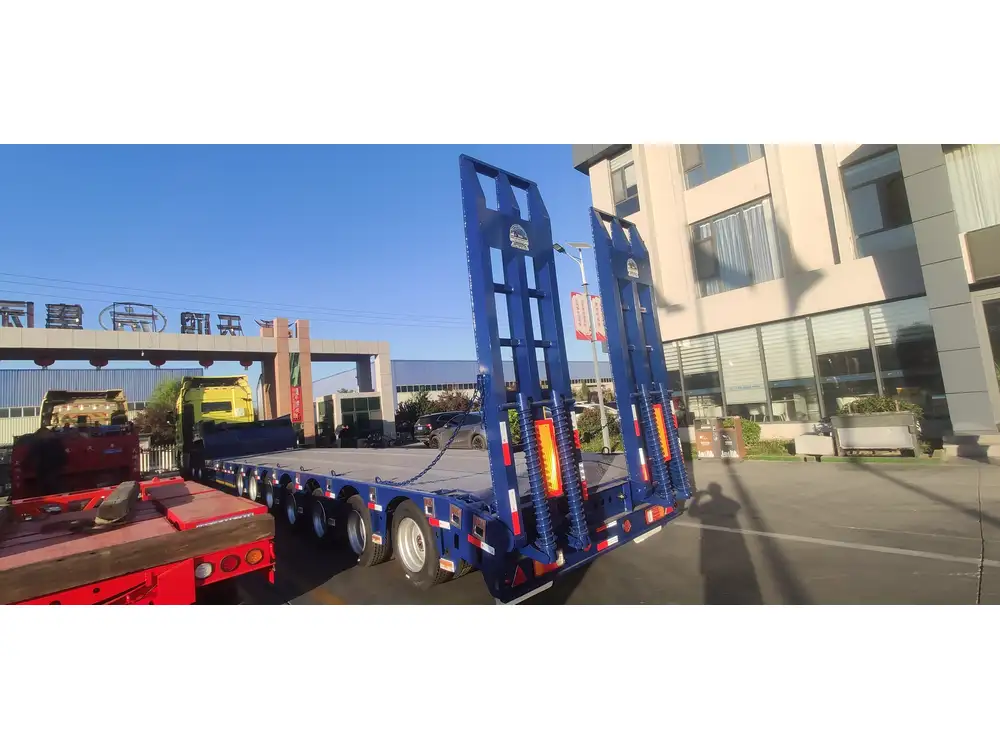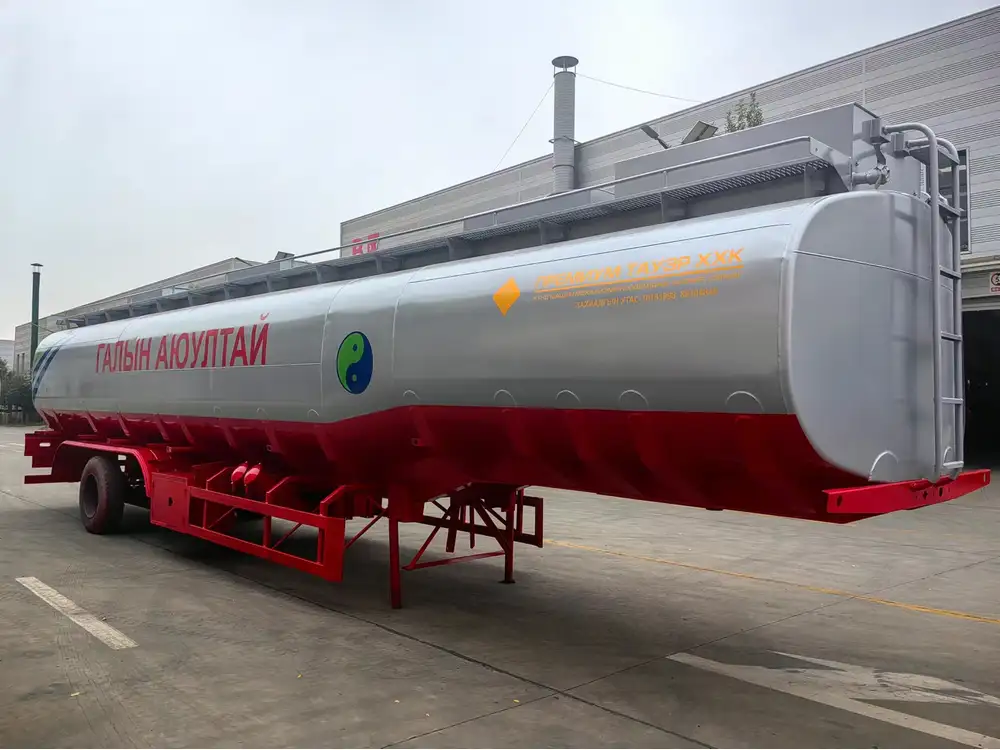Understanding Semi-Trailer Capacities
When it comes to transporting agricultural products, particularly beans, understanding the capacity of semi-trailers is crucial for manufacturers, suppliers, and logistics companies. Semi-trailers come in various lengths, types, and designs, influencing their overall volume and load capacity. This section delves into these variations to give you a foundational understanding of how many bushels of beans a semi-trailer can hold.
Types of Semi-Trailers
Standard Flatbed Trailers
- Dimensions: Typically 48 or 53 feet in length, flatbeds provide flexibility for loading and unloading various items.
- Capacity: They can hold approximately 26-30 tons, but they are less commonly used for bulk commodities like beans without protective coverings.
Enclosed Trailers
- Dimensions: Also generally available in 48 or 53 feet lengths.
- Capacity: Ideal for transporting sensitive cargo; however, beans need proper ventilation, making open trailers more suitable.
Grain Trailers
- Dimensions: These specialized trailers often measure between 40 and 50 feet.
- Capacity: They are specifically designed to carry grains like beans and can often handle between 900 to 1,200 bushels depending on the model.

Capacity Calculations
A fundamental step in understanding how many bushels of beans fit in a semi-trailer involves precise calculations based on the type of trailer used. Here’s a breakdown of critical metrics.
| Trailer Type | Length (ft) | Width (ft) | Height (ft) | Volume (cubic ft) | Typical Bean Capacity (bushels) |
|---|---|---|---|---|---|
| Grain Trailer | 40 | 8 | 7 | 1,680 | ~900 |
| Grain Trailer | 50 | 8 | 7 | 2,100 | ~1,150 |
| Grain Trailer | 53 | 8 | 9 | 3,072 | ~1,300 |
| Standard Flatbed | 48 | 8.5 | 5 | 1,626 | Limited for Beans |
Converting Volume to Bushels
To convert cubic feet to bushels, a standard conversion factor is applied. One bushel is equivalent to 1.244 cubic feet. While this can vary slightly based on specific agricultural standards, it provides a reliable baseline for our calculations.
For instance, if a grain trailer has a volume of 1,680 cubic feet:
[ \text{Bushels} = \frac{\text{Cubic Feet}}{1.244} = \frac{1680}{1.244} \approx 1,352 \text{ bushels} ]This calculation demonstrates how understanding both capacity and the right conversions can lead to effectively managing logistics for transporting beans.
Factors Influencing Capacity
While the dimensions of the trailer provide a baseline capacity for beans, several crucial factors may affect the actual load:

1. Weight Regulations
Each state has specific weight regulations governing commercial transportation. Most states limit the maximum load weight to approximately 80,000 pounds for a semi-trailer, including the trailer’s weight. It’s essential to calculate the total weight to ensure compliance with these regulations.
- Empty Semi-Trailer Weight: Approximately 15,000 to 25,000 pounds depending on the trailer type.
- Net Load Calculation: If a semi-trailer has an empty weight of 20,000 pounds, you can load up to 60,000 pounds of beans.
Knowing that one bushel of dry beans weighs approximately 60 pounds, this translates to:
[ \text{Maximum Bushels} = \frac{60,000 \text{ pounds}}{60 \text{ pounds/bushel}} = 1,000 \text{ bushels} ]2. Train Configuration
The length and number of axles on a semi-trailer can impact both weight distribution and permissible load. A shorter trailer may require more frequent stopping, which can reduce efficiency and loading capacity.
3. Moisture Content in Beans
The moisture level in the beans significantly influences their weight. Dry beans are lighter than wet beans, meaning fluctuations in moisture can alter how many bushels can be loaded safely without exceeding weight limits. Generally speaking, the recommended moisture content for storage is around 13-14%.

4. Loading Style
The method of loading beans can also impact the capacity. Loose loading might create voids and lower total bushel amounts, while packed loading maximizes the use of every cubic inch available.
Navigating Logistics and Transportation
Once you’ve determined how many bushels of beans fit in a semi-trailer, the next step is navigating the logistics of transportation. Here are key factors to consider:
Route Planning
Efficient route planning ensures that the transportation of beans is both time-efficient and cost-effective. Factors to consider include:
- Distance to the destination
- Road conditions and potential hazards
- Availability of weigh stations for compliance checks

Coordination with Distributors
Working closely with distributors ensures a smooth transition from farm to market. Here’s a quick checklist:
- Confirm delivery schedules in advance
- Align on weight restrictions and loading preferences
- Keep open lines of communication for any last-minute changes
Compliance and Regulations
Adhering to trucking and agricultural regulations can prevent costly fines or delays. Key aspects include:
- Ensuring commercial driver’s licenses (CDLs) for operators.
- Pre-trip inspections and weight checks.
- Familiarity with state and federal transportation guidelines.
Case Study: Bean Transportation Efficiency
To illustrate these principles in action, let’s consider a hypothetical case of transporting dry beans from a farm in Nebraska to a processing facility in Illinois.

Scenario Overview
- Starting Location: Nebraska
- Destination: Illinois
- Trailer Type: Grain Trailer (53 feet)
- Total Load: 1,200 bushels of dry beans (72,000 pounds total)
Logistics Flow
Route Analysis:
- Total distance: 600 miles.
- Estimated driving time with regulations: Approximately 12 hours.
Load Accuracy:
- Ensure load is carefully distributed.
- Utilize on-site scales for pre-load checks.
Delivery Coordination:
- Notify the processing facility of the expected arrival time.
- Confirm unloading capabilities to avoid delays.
Outcome Analysis
Upon successful delivery, the following efficiencies were identified:
- Loading Time: Reduced by 15% with the new packing method.
- Fuel Efficiency: Improved by 10% due to optimized routing and less idling time.
- On-Time Delivery Rate: Achieved 95%, ensuring contracts were fulfilled without delay.

Conclusion
Understanding how many bushels of beans fit in a semi-trailer is not merely a calculation—it’s a fundamental aspect of agricultural transport that impacts everything from logistics to compliance and overall efficiency. By comprehensively examining the types of trailers, weight regulations, loading considerations, and route planning, one can effectively optimize the transportation of beans.
Whether you’re a farmer, dealer, or logistics coordinator, having a well-rounded grasp of these elements empowers you to make informed decisions that maximize efficiency, reduce costs, and ensure timely delivery. As the agriculture sector continues to evolve with the demands of a growing market, staying ahead with knowledgeable transport strategies is paramount.



